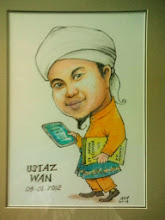| Overshoes type of clogs (pattens) with leather shoes (German), reconstruction of the Middle Ages |
A clog is a type of footwear made in part or completely from wood. Clogs are used worldwide and although the form may vary by culture, within a culture the form often remained unchanged for centuries.
Traditional clogs were often worn in heavy labor. Today they remain in use as protective clothing in agriculture and in some factories and mines. Although clogs are sometimes negatively associated with cheap and folkloric footwear of farmers and the working class, some types of clogs are considered as fashion wear today, such as Swedish clogs (sv) or Japanese geta.
Clogs are also used in several different styles of dance. When worn for dancing an important feature is the sound of the clog against the floor. This is one of the fundamental roots of tap, but with the tap shoes the taps are free to click against each other and produce different sound to clogs.
The Oxford English Dictionary[1] defines a clog as a "thick piece of wood", and later as a "wooden soled overshoe" and a "shoe with a thick wooden sole".
Clogs are found in three main varieties: wooden upper, wooden soled and overshoes (see illustrations on the right for typical forms).
- Wooden upper clogs; are made by hollowing out a lump of solid wood to make a combined upper and lower. Two main variants can be seen:
- whole foot clogs; where the wooden upper covers the whole of the foot to near the ankle, such as the familiar Dutch klomp. They are also known as "wooden shoes". Whole foot clogs can give sufficient protection to be used without additional reinforcements.
- half open clogs; where the wooden upper extends over the toes or slightly further, such as the Italian zoccolo (it) or Belgian sabots. The upper is similar in outline to acourt shoe. Half open clogs may have additional covering or securing straps in some sort of fabric or leather.
- Wooden soled clogs; use wood for the sole only. Wooden soled clogs come with a variety of uppers:
- complete uppers made from leather or similar material, such as English clogs. For more protection, they may have steel toecaps and/or steel reinforcing inserts in the undersides of the soles
- open sandal type fitting. For example Japanese geta
- toe peg styles. For example Indian paduka
- Overshoes; are wooden soles with straps designed to be worn over other footwear for protection, commonly known as pattens. Patten style clogs are not used anymore. However the derivative galoshes are common world-wide.
These divisions are not fixed: some overshoes look more like whole foot clogs, like Spanish albarca, whilst other wooden soled clogs raise and protect clothing in the way that overshoes do, such as Japanese geta.
The type of upper determines how the clogs are worn. Whole foot clogs need to be close fitting and can be secured by curling the toes. In contrast wooden soled clogs are fastened by laces or buckles on the welt and therefore the toes are relaxed as in shoes. Half open clogs may either be secured like whole foot clogs, or have an additional strap over the top of the foot. Some sandal types, and in particular toe peg styles, are worn more like "flip-flops" and rely on the grip between the big and next toe.
Being wood, clogs cannot flex under the ball of the foot as softer shoes do. To allow the foot to roll forward most clogs have the bottom of the toe curved up, known as the cast.[2] Some styles of clogs have "feet", such as Spanish albarca. The clog rotates around the front edge of the front "feet". Japanese and Indian clogs may have "teeth" or very high pegs attached to the soles. The clog can rotate around the front edge of the front "tooth" as the wearer strides forward. Some medieval pattens were in two pieces, heel through to ball and ball to toes. Joining the two was a leather strip forming a hinge, thus allowing the shoe above to flex.[3]
| Wooden soled type English clogs |
The origin of wooden footwear in Europe is not precisely known. De Boer-Olij reference to the high, thick-soled boots of the Greektragedy actors in Antiquity (the buskin) and to the shoes worn by Roman soldiers (the caligae).[4] However, there is a possibility that the Celtic and Germanic peoples from Southern- and Northern Europe were familiar with some sort of wooden foot covering. Archaeological finds of these are not known. Wooden footwear often ended up as firewood and, because of its nature, wood will rot away in the long run. The oldest surviving wooden footwear in Europe is found in Amsterdam and Rotterdam, the Netherlands, and dates from 1230 and 1280.[5] These finds look very similar to the wooden shoes as they are still worn in The Netherlands.
Since wooden footwear was a hand-made product, the shape of the footwear, as well as its production process showed great local and regional diversity in style. At the beginning of the 20th century machine-made wooden footwear was introduced. After WW2, in particular, wooden shoes disappeared from sight. They were replaced by more fashionable all-leather and synthetic footwear. At present, only the so-called Swedish clogs (wooden bottom and leather top) is still seen as a trendy fashion item, often as ladies’ high-heeled boots. Nevertheless, traditional wooden footwear is still popular in several regions in Europe and in some occupations, for its practical use. Some historic local variations have recently been replaced by uniform national models.

No comments:
Post a Comment